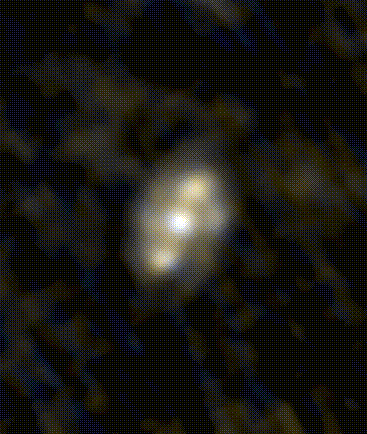
Visible and ultraviolet light mostly show us stars. As one looks deeper into the infrared, one first sees through any obscuring dust, then sees the dust itself shining at a few tens of degrees above absolute zero, heated by the feeble starlight in interstellar space. This far-infrared color image shows the warm dust in M81, mostly dust close to hot stars and so giving, in part, another tracer of the star-formation rate and pattern. It offers advantages over H-alpha and ultraviolet tracers in being (naturally) utterly indifferent to absorption by dust, but suffers ambiguity in knowing just how much cooler dust not heated by young stars is present. Bursts of star formation are prominent in the far-infrared, so that tens of thousands of starburst galaxies have been identified from their far-IR emission. Only a handful of galaxies are large and close enough to make out any structure in their far-infrared emission at this point, as we can do for M81.
These data were taken by IRAS (the Infrared Astronomical Satellite) during its survey of the far-infrared sky in 1983 and 1984. Its detectors produced a pushbroom pattern of scans across the sky, rather than a direct image. A computer algorithm known as HIRES was used here to produce a higher-resolution image than direct reconstruction of the scans would allow. Even so, the long wavelength of the IR radiation and the relatively small size of the IRAS 60-cm (24-inch) telescope combine to yield an image much blurrier than we have at the other wavelenghts. However, the overall spiral pattern and the most intense star-forming regions can be seen. Data and HIRES processing by the Infrared Processing and Analysis Center.
Last changes: 5/2001 © 2001